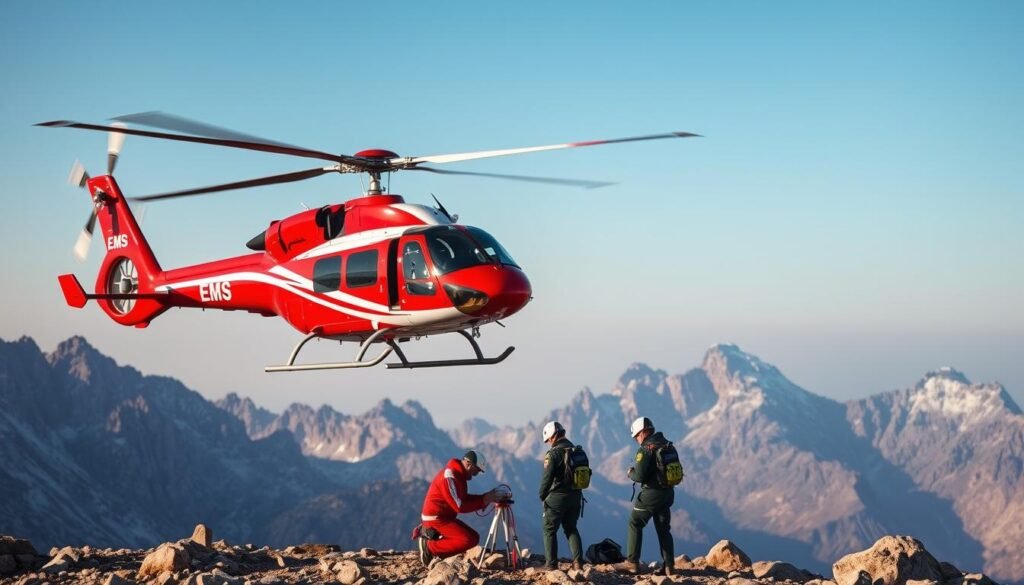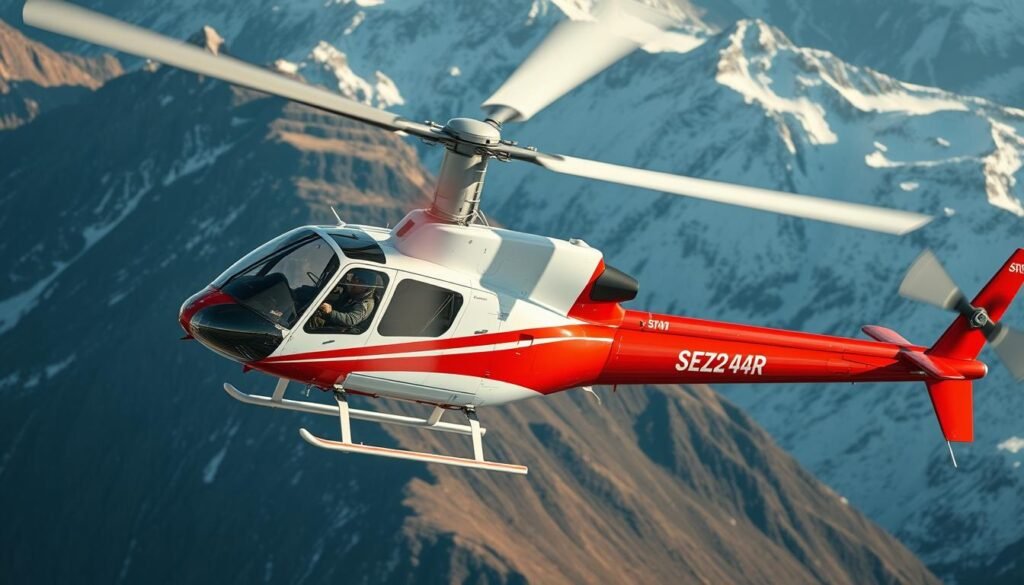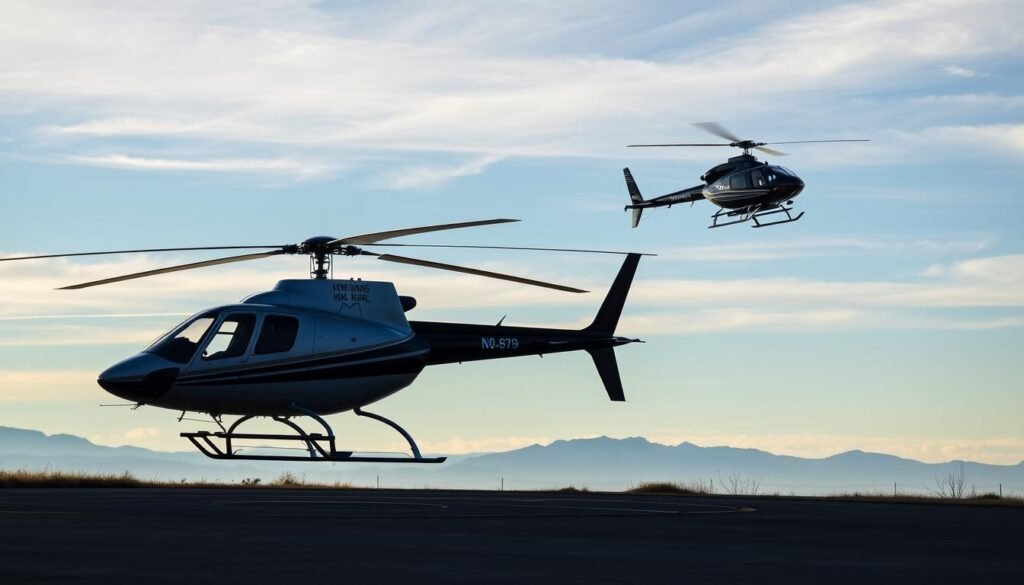Who would you trust to protect patients, crew, and aircraft when every second matters? This question frames the urgent need for a purpose-built policy before conducting time-sensitive medical flights.
The article explains why a tailored aviation policy matters for people on board and the program that supports them. It outlines core coverage such as passenger liability, in‑flight and ground risk hull, and professional liability for operational decisions.
Independent agents compare carriers to align coverage with mission profiles, geography, and crew experience. Specialized Medevac needs, like medical equipment coverage, are highlighted for teams that fly in hard conditions and tight landing zones.
The intro sets expectations about underwriting data, limits, and how to streamline quotes so a flight program stays compliant and mission-ready. Readers will leave knowing the key protections to request before they fly.
Key Takeaways
- Purpose-built policies protect people, aircraft, and operational decisions in emergency flights.
- Coverage commonly includes passenger liability, hull risk, cargo, and professional liability.
- Independent agents help match limits and deductibles to mission needs and budget.
- Medevac operations often require added medical equipment and specialty cover.
- Preparing accurate underwriting data speeds quotes and keeps programs compliant.
Who Needs Coverage And Why It Matters For Emergency Medical Flights
High-tempo medical flights demand coverage that reflects landing in fields, roads, and steep terrain. Teams that answer urgent calls operate in ways that increase exposure for people, equipment, and third parties.
High-Risk Missions, Tight Timelines, And Challenging Landing Zones
Operators, hospital programs, and contracted helicopter pilots face launch decisions under pressure. Nighttime dispatch, bad weather, and off-airport landings raise the chance of damage and injury.
Top Accident Drivers: Pilot Error, Mechanical Failure, And Ground Incidents
Leading causes include pilot error, defective parts, engine or power loss, and poor maintenance. These drivers create exposures that translate into both liability and hull protections in a comprehensive policy.
Regulatory, Hospital, And Contractual Insurance Requirements
Contract terms and FAA rules influence minimum liability limits, passenger protections, and equipment coverage. Passengers often include patients, nurses, and paramedics, so passenger and third-party property coverages must align after an incident.
- Rescue profiles such as remote extractions often need expanded endorsements and safety protocols.
- Clear records on maintenance, training, and incident reporting help pilots and helicopter pilots secure better terms from underwriters.
EMS Helicopter Pilot Insurance: Core Coverages To Protect People, Aircraft, And Operations
Choosing the right mix of protections reduces operational risk and speeds recovery after an incident.
Professional liability and errors & omissions cover operational decisions such as route choices and go/no‑go calls. They provide defense and indemnity when allegations claim negligent mission execution.
The passenger liability section protects patients, medical crew, and other passengers for bodily injury, death, and loss of personal property. This coverage need is central for every flight profile.
In-Flight And Ground Risk Hull
In‑flight coverage pays for physical damage to the aircraft while airborne. Ground risk hull applies during loading, refueling, maintenance, and hangaring. Both are essential to restore aircraft availability quickly.
General Liability And Combined Single Limit Options
General liability covers third‑party property damage and bodily injuries not tied to piloting maneuvers. A Combined Single Limit (CSL) can simplify claims by merging passenger and public liability limits.
Cargo And Medical Equipment Coverage
Cargo and inland marine extensions protect transported items like ventilators, pumps, and organ containers. Tailored endorsements match value and mission criticality.
“The most effective programs pair clear defense provisions with limits set by exposure analytics and operational data.”
| Coverage Type | Primary Benefit | Typical Limit Range | Key Endorsement |
|---|---|---|---|
| Professional Liability | Defense & indemnity for operational errors | $1M–$5M | Errors & Omissions |
| Passenger Liability | Bodily injury and personal property | $500K–$10M | Per‑seat/Split or CSL |
| Hull (In‑Flight / Ground) | Physical damage to the aircraft | Hull value up to unit value | Ground Risk Hull |
| Cargo / Equipment | Protection for medical assets | $10K–$1M+ | Inland Marine Endorsement |
Policy documents should spell out duty to defend, counsel selection, and how coverage coordinates with hospital indemnities. Proper limits derive from exposure analytics—passenger load, mission radius, and nearby property concentrations—to ensure adequate protection for pilots and helicopter pilots.
Tailored Policies For High-Risk EMS Operations And Specialty Needs
High‑risk medical flight programs require bespoke coverage that mirrors mission realities and operational detail. This approach avoids broad gaps and aligns the written terms with daily procedures.

Built-For-You Coverage, Not One-Size-Fits-All
Built‑for‑you policies match route profiles, landing zones, and hospital integrations. Custom endorsements cover medical equipment, hot loads, night‑vision operations, and helipad work.
Claims Support And Defense Against Frivolous Lawsuits
XINSURANCE and similar specialty underwriters consolidate multiple protections into one plan to reduce gaps and simplify administration.
- Dedicated claims teams defend insureds against unfounded lawsuits and manage incidents from notification through resolution.
- Independent agents present safety data and training to secure favorable terms for pilots and hospital partners.
- Post‑event reviews and loss‑control resources create long‑term value and keep the aircraft and crew mission‑capable.
Cost, Rates, And Factors That Influence Your Premium In The United States
Premiums for emergency aviation operations hinge on a few predictable variables that underwriters value most. Understanding those drivers helps programs control cost and secure the right policy terms.
Aircraft Value, Mission Profile, Geographic Area, And Hours Flown
Underwriters base rates on aircraft value, mission type, home base geography, and annual flight hours. High-value airframes and heavy use raise premiums.
Scene calls, night work, and off-airport landings add loadings because they increase exposure to damage and injuries. Urban operating areas often carry higher liability costs than rural bases.
Pilot Experience, Ratings, And Safety Record Impact On Rates
Crew experience and ratings such as IFR affect pricing. A strong safety record and up-to-date training reduce risk and can lower rates.
Documented maintenance quality and currency in standard operating procedures also help underwriters offer more favorable terms.
How Independent Agents Shop Multiple Carriers For Value
Independent agents present a complete submission to multiple underwriters to find the best mix of coverage and price. They highlight strengths such as low loss history, secure hangars, and robust SOPs.
- Best-in-class submissions include aircraft specs, pilot log summaries, maintenance records, and training history.
- Agents compare deductible options, limits, and endorsements to meet contractual needs and long-term value.
Life Insurance And Loss Of License Protection For EMS Helicopter Pilots
When a medical disqualification or credential lapse halts flying, well‑structured benefits prevent family hardship. This section outlines life and loss‑of‑license options tailored to aircrew who depend on flight income.
Private Versus Commercial Pilot Considerations And Preferred Rates
Underwriters assess logbook hours, medical history, and the type of flying to price death benefits. Travers & Associates note private pilots with 100+ lifetime solo hours and 25+ hours per year, plus clean medicals and IFR, often qualify for preferred rates.
Commercial flying carries varied risk buckets. For‑hire roles (police, offshore, fire) influence rates. Agents must document mission type and safety metrics to avoid broad, costly classifications.
Income Protection If An FAA Medical Or License Is Lost
Loss of license plans replace a portion of pay if an FAA medical lapses or a credential cannot be maintained. These policies bridge gaps between employer benefits and personal disability coverage.
- Bundle life and loss products to avoid overlap and preserve continuous benefits.
- Document years, experience, ratings, and training milestones to secure better terms.
- Align benefit amounts and periods with household needs and existing employer programs.
| Product | Main Benefit | Key Applicant Factor |
|---|---|---|
| Life Policy | Death benefit for survivors | Medical history & flight hours |
| Loss Of License | Income replacement | Type of for‑hire flying |
How The Quote, Underwriting, And Claims Process Works Today
A streamlined risk review turns scattered documents into competitive market offers that reflect real operational value. Independent agents gather aircraft records, crew qualifications, maintenance logs, mission profiles, base details, and nearby property exposures to match coverage need and limits.

From Risk Assessment To Binding Coverage And Ongoing Policy Service
Underwriters review loss runs and training records to set liability insurance limits, hull values, deductibles, and endorsements that fit the flight tempo.
Agents submit to multiple markets to surface comparative value and explain differences in exclusions, defense provisions, and claims handling.
Binding requires final terms, warranties, and evidence of insurance so operators avoid coverage gaps during busy time windows.
“The best programs pair quick market access with full-service claims support to protect aircraft, property, and crew.”
- Post-binding service covers pilot additions, equipment updates, and helipad changes.
- On incident, preserve evidence, notify the carrier, and coordinate adjusters and counsel immediately.
- Specialty carriers remain active through litigation, answering complex questions and guiding legal strategy.
- Annual reviews re-benchmark limits and endorsements against evolving operational needs and community risk.
Conclusion
A clear, mission‑aligned policy gives crews and programs the tools to bounce back after an incident. A tailored plan protects people, property, and the aircraft with a mix of professional liability, passenger limits, hull (in‑flight and ground risk), and equipment cover.
Independent agents and specialty markets like XINSURANCE help shop terms, defend against frivolous suits, and shape built‑for‑you programs. Life underwriters and firms such as Travers & Associates can arrange preferred life and loss‑of‑license solutions to secure household stability over the years.
Next steps: compile recent logs, maintenance records, equipment lists, and SOPs. Contact an aviation‑savvy agent, get focused quotes, and schedule annual reviews to keep coverage current and the team ready for the next rescue.



